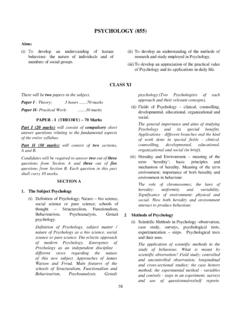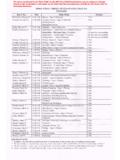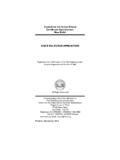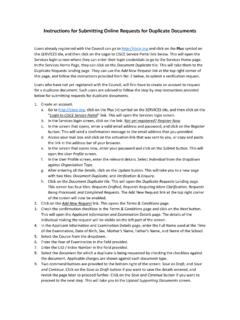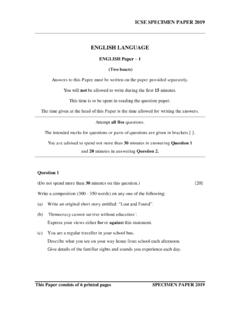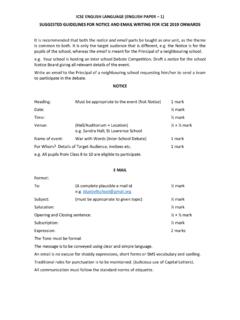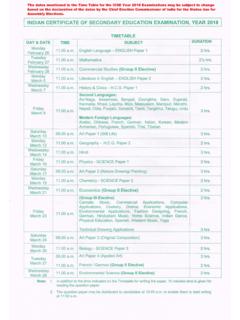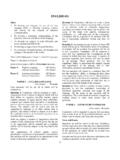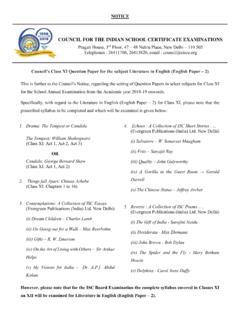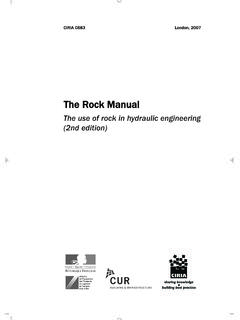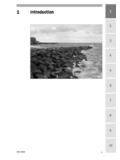Transcription of GEOGRAPHY (8 53) - cisce.org
1 GEOGRAPHY (853). Aims 1. To enable candidates to acquire knowledge consequences of natural hazards and suggest (information) and to develop an understanding ways of coping with them through sustainable of facts, terms, symbols concepts, principles, development. generalizations, hypotheses, problems, trends, 3. To develop skills of drawing maps, surveying, processes and methods of GEOGRAPHY at the and drawing statistical diagrams and thematic national and global level. maps. 2. To apply the knowledge of the principles of 4. To develop an interest in GEOGRAPHY .
2 Physical GEOGRAPHY in explaining the causes and CLASS XI. There will be two papers in the subject. Population and Settlement, Economic, Political). Paper I Theory (3 hours) .70 marks The conceptual and intellectual ideas of Paper II Practical and Project Work 30 marks a number of new approaches to contemporary human GEOGRAPHY should PAPER I: THEORY (70 Marks) be examined to understand the strengths There will be one Theory paper of three hours and limitations of each approach within duration divided into two parts: the context of Human GEOGRAPHY and Social Sciences.
3 Part I (30 marks) will be compulsory and will consist of Section A and Section B. (ii) Regional approach: Regional/ Area Studies, Regional Planning, Regional Development. Section A will include compulsory short answer questions testing knowledge, application and skills Future prospects of GEOGRAPHY to be discussed: related to elementary/fundamental aspects of the In the area of GPS, GIS, Remote Sensing for entire syllabus. resource identification. Section B will consist of one question on map work. Applied GEOGRAPHY in town and country Part II (40 marks) will consist of seven questions.
4 Planning, environment management and law, Candidates will be required to answer four out of cartography and mapping, GEOGRAPHY seven questions. Each question in this part shall education, map analysis, travel and tourism carry 10 marks. (to be taught only for the sake of awareness, not for testing). GEOGRAPHY AS A DISCIPLINE. PRINCIPLES OF PHYSICAL GEOGRAPHY . 1. GEOGRAPHY - its interdisciplinary approach and 2. Earth's Interior future prospects (i) Composition and structure. GEOGRAPHY as an integrating discipline. Physical GEOGRAPHY and Natural Sciences; GEOGRAPHY and Methods of measuring age of the earth: Tidal Social Sciences.
5 Force, Sedimentation, Rate of Erosion, Salinity of the Ocean, Radioactivity a brief Branches of GEOGRAPHY : understanding. (i) Systematic approach: Physical GEOGRAPHY (Geomorphology, Climatology, Hydrology); Structure and composition of the earth's Human GEOGRAPHY (Historical, Social, interior: crust, mantle, core; their properties - temperature, pressure, thickness. 42. (ii) Rocks. (iv) Vulcanicity materials and processes . Major volcanic forms. Definition of rocks and minerals. The mineral groups responsible for different rocks formed Explanation of how volcanoes are formed.)
6 On the earth: Silicates, carbonates, sulphides, identification of the type of volcano;. metals. recognition of the properties of volcanic materials; explanation of why volcanoes are Classification of rocks by origin: igneous, more in the areas of converging plates. metamorphic and sedimentary rocks their distribution in India; characteristics, types, (v) Earthquakes. economic importance. Origin of earthquakes, waves and their behaviour, hypocentre (focus), epicentre;. The rock cycle. their causes and distribution; effects;. 3. Changing Face of the Earth isoseismal and homoseismal lines, sea quakes, tsunamis; measuring earthquakes and their Land forms and processes of Gradation intensity.
7 (i) Formation of the Earth. Studying the effects of earthquakes on a Theories of formation of the earth: steady country like Japan. state, Big Bang and the developments today. (vi) Exogenetic process and associated landforms. (ii)Endogenous processes : theory of plate Weathering and gradation difference tectonics and the process of drifting between the two. Role of weathering in continents, theory of Isostasy by Pratt and gradation. Different types of weathering. A. Holmes. (vii) Soil. Definition of endogenetic force, difference The factors affecting soil formation; soil between slow and sudden forces, vertical and profile; physical and chemical properties, horizontal forces and their effects.
8 Sea floor distribution and characteristics of soils in the spreading, continental drifting and isostacy. world - zonal, azonal and intrazonal only (iii) Landforms mountains, plateaus and plains broad characteristics related to Indian soils and their types. to be done (detailed distribution not required). Meaning and differentiation between the three main land forms of the earth. Alluvial, red, yellow, black and laterite soils in India and the problems related to their Classification of mountains on the basis of management. their origin or mode of formation: fold, block, (viii) Fluvial processes and associated landforms.
9 Volcanic and residual with examples from the world. Work of rivers - concept of baselevel;. processes of erosion, transportation and Classification of plateaus on the basis of their deposition. Types of erosion - headward, situation: intermontane, piedmont and vertical, lateral; transportation mode and continental with examples from the world. deposition. Classification of Plains on the basis of Landforms made by the river - gorges, rapids, formation: structural, erosional and waterfalls, alluvial fans, levees, floodplains, depositional with examples from the world.
10 Meanders, braided channels, oxbow lakes, (Candidates should be able to recognise, deltas delta plains. interpret and create models of the Earth's Development of river valleys, drainage common physical features in mapping patterns. Diagrams and examples from representation including contour maps.) India with photographs. 43. (ix) Aeolian processes and associated landforms. 4. Atmosphere Process of wind erosion abrasion, attrition, (i) Composition and structure of atmosphere. deflation. Ideal conditions for erosion in hot Layers of the atmosphere: troposphere, deserts; landforms resulting from erosion - stratosphere, ozonosphere, mesosphere, deflation hollows, pedestal rocks, yardangs, ionosphere; their height; composition; special desert pavement; landforms resulting from characteristics of each layer; ozone depletion.
